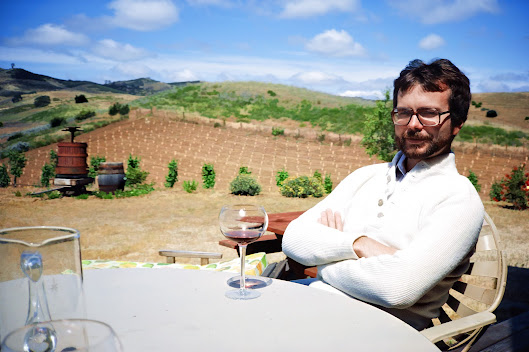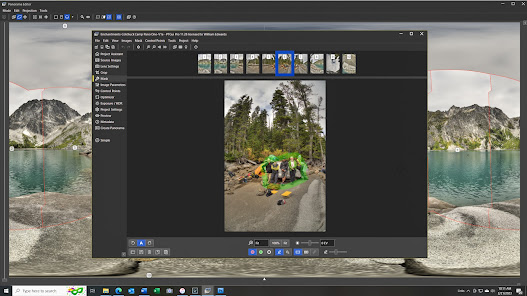The Hidden Cellar:
Our wine
sleuthing even encompassed the local state liquor stores where we’d browse for
treasures, older and obscure wines that had somehow escaped notice, or
clearance wines that could be had at a bargain price. We once cleaned out all
the local stores of the remaining bottles of an overlooked vintage port, the
’67 Portuguese Quinta do Noval Vintage Port, at a price that was a screaming
deal (only $6.50 a bottle). That didn’t happen every day. For wine people, it
was the equivalent of a ‘barn find’ for car people, a rare occurrence and a
great story when it happened. Our wine hunts even extended to San Francisco,
where we’d fly down and hit all the better specialty wine stores like ‘The Wine
Library,’ amassing a small collection of selected hard-to-find wines from the
preeminent smaller California vineyards of the day. We’d pack up the wines and
ship them back to Seattle on the Greyhound, as we then flew back.
To
mitigate breakage or theft, we labeled the boxes ‘Ceramics. Fragile!
Handle with Care!’ We figured ceramics would generate little attention and the
size and weight of the boxes were fit for that description. A few days later,
we got the call and hurried over to the Greyhound station, nervous with
concern. While there were no guarantees, all boxes arrived intact without any
internal injuries. We had a good laugh and hurried back to Z-man’s apartment
where we had steak sandwiches and drank a fine cabernet while he told me about
a romantic story written by Roy Andries de Groot, the British-born, American
culinary writer and wine critic.
Now
evening in Seattle, the incessant rain poured down. With lightning in the
distance, Z-man stood in front of the old fireplace in his Capitol Hill
apartment swirling the cabernet in his large wine glass. He and the wine were dramatically backlit by the gentle flames of the fire, the orange light glinted
through his eyeglasses as he turned to face me. Ron slowly, dramatically began
the story as one might a tale of mystery and intrigue. The story came from a
book titled, ‘The Auberge of the Flowering Hearth.’ Roy Andries de Groot had
discovered, quite by accident, a charming and unpretentious little inn in the
high Alpine valley of La Grande Chartreuse.
He became enamored with the two women who owned the auberge and their devotion to perpetuating a tradition of fine country dining with mostly locally sourced ingredients. And once smitten with their approach, he returned to the inn to record their recipes and in the process wrote the book that so deeply resonated with Z-man. It made perfect sense. The internal Ron Zimmerman lived in a world that was rich with fantasy, and the romance of faraway places, and he cultivated that. So, it was easy for him to be captivated by the small book.
Ron and
I continued our deep diving into the world of wines, traveling to many
wineries along the west coast, and making celebratory dinners for special wines
like the 1929 Bonnes Mares that he had gifted to me and Diane on our wedding
day. Leaning on Julia Child’s ‘Mastering the Art of French Cooking,’ I made a
Beef Wellington en croute with a side dish of roasted vegetables and a Bavarois
Crème d’Orange for dessert. Ron orchestrated the wines, surrounding the ’29 with
an array of distinguished companions.
We started with a ’62 Meursault-Charmes, followed by a ’55 Volnay, then a ‘71 Corton-Renardes, then the ’29 Bonnes Mares, and finally a Taylor Fladgate vintage port. The star of the show was the ’29 and, though it had reputedly been carefully recorked at some time in its life, it was now 50 years old and we expected it to hobble out on crutches. We were blown away when it emerged from the decanted bottle much more vigorous, robust, and tastier than we had ever expected. It totally blew our minds. Who would have expected such vibrance from a 50-year-old wine!
We would later visit many of the storied vineyards in California as well as the emerging Oregon wineries, meeting and tasting with David Lett, Papa Pinot himself. We even made our way to the home of Chartreuse, the famous French herbal liqueur made by Carthusian Monks since 1737. We tasted wine as far away as Switzerland at Chez Norbert, a fine restaurant with a deep cellar of Swiss wines. Wines that we had never heard of. Who knew the Swiss could make wines? Well, they did and they were astounding in their quality and nuance. So why hadn’t we heard of them? They never left the country, as they were all consumed by the Swiss. And so, our ongoing wine quest expanded to include restaurants as well.
One dark
night after a day at a big sporting goods show in Chicago, we donned
sportscoats, ties, and woolen overcoats, and drove in a blinding snowstorm
north to Wheeling to take a 3-hour meal at the newly renowned Le Francais. Mike
Schonhofen sat at the wheel, hunched forward, eyes intensely scanning ahead,
following the pale-yellow beams of our headlights as they probed and lit the
endlessly streaming white flakes of the winter snow. Larry Horton, his girlfriend Betty, Z-man, Diane, and I sat huddled in the car, waiting and shivering. The heater was cranked up
as far as it would go but to no avail. It was as if we were in a tent high on
a mountain in a driving storm waiting for the hour of our summit bid. The large
rental car fishtailed through the ruts in the ever-deepening snow, and then,
finally, we were there.
The restaurant building sat solitary amidst a snowy parking lot, barely lit with sparkling lights. Entering the warmth of the highly refined and sumptuously decorated interior, we were quickly ushered to our waiting table. The storm outside was soon forgotten as we ordered pheasant consommé en croûte. After several minutes a white-jacketed server brought a large stuffed pheasant to the table and presented it with a flourish. The bird was resplendent, dazzling with its natural fall colors. But why did it arrive?
After a beat, the server was joined by the chef himself and they graciously welcomed us all, both laughing heartily at their amusing little gag, and the stuffed bird was then summarily whisked away and replaced with six steaming bowls of the real consommé. We poked our spoons through the baked crust and paused to inhale the sublime and savory fragrance. Magnifique! The entire evening was sensational and worth all the effort to make the journey. Le Francais would soon put Chicago on the map for the culinary arts. It would be long remembered by all of us, and especially by Ron Zimmerman.
Once we
discovered that one of our fabric suppliers, John Murphy, was a wine enthusiast,
he invited me and Z-man down to Chalone, a California winery high in the
Gavilon Mountains. As an investor and friend of the winery, he arranged the
trip so we were able to spend a couple days on the property, meeting the
winemaker, touring the winery facility, hiking the vineyards, and tasting their
wines while seated at the back deck of their guesthouse, overlooking the
rolling hills and vineyards.
We had heard from John about the notable, actually famous, guesthouse cellar and as we searched the cabin, we could not find it. Noting our frustration, John beckoned us into the kitchen where he pulled away a table and lifted a small carpet for the big reveal. There was a trap door. He lifted it up with the thumb latch and looked back at us, grinning broadly. Z-man and I, both stunned, slowly climbed down the vertical wood ladder into the air-conditioned subterranean cellar. It was like something out of a pirate movie, buried treasure, racked single older vintage bottles, and densely stacked cases of older California vintages, not only from Chalone but the fabled Stony Hill, Hanzell, and others.
Closed to the public, Chalone at that time made sensational wines and it was only through our friendship with John that we actually got to experience the place. We celebrated with a few bottles on the back deck as the sun slowly set, bathing the west-facing slopes of the vineyards with golden hues. At the time, we did not yet know how precious those moments were. A few years later, we were both shocked and saddened to hear that the guest house had perished in a mysterious fire, and the fabulous cellar of vintage wine treasures had vanished with it.
What I didn’t realize at the time of that rainy evening, when Ron stood in front of the fireplace, telling the story of ‘The Auberge of the Flowering Hearth,’ was that he was already writing his future, a future after the outdoor business. He and his girlfriend Carrie Van Dyck would later marry and start a small restaurant that created a distinctive and seasonally changing tasting menu, artfully paired with excellent and cleverly appropriate wines. Ron named it ‘The Herbfarm’ after his parent’s farm in Fall City, Washington. Until just recently, Ron and Carrie continued at the helm, having already some time ago achieved great heights in the culinary world with one of the most recognized and awarded restaurants anywhere, not to mention of course an enormous wine cellar of quality, breadth, and depth.
The
little book by Roy Andries de Groot had, for Ron, lit the flame, and all of
those other wine and culinary experiences that we shared, both kindled and fed
the fire.
When we
are in a state of readiness, those little opportunities and influences that
bump up against us can sometimes inspire us to make great things happen. And
we need to pay homage to that when it happens.
























